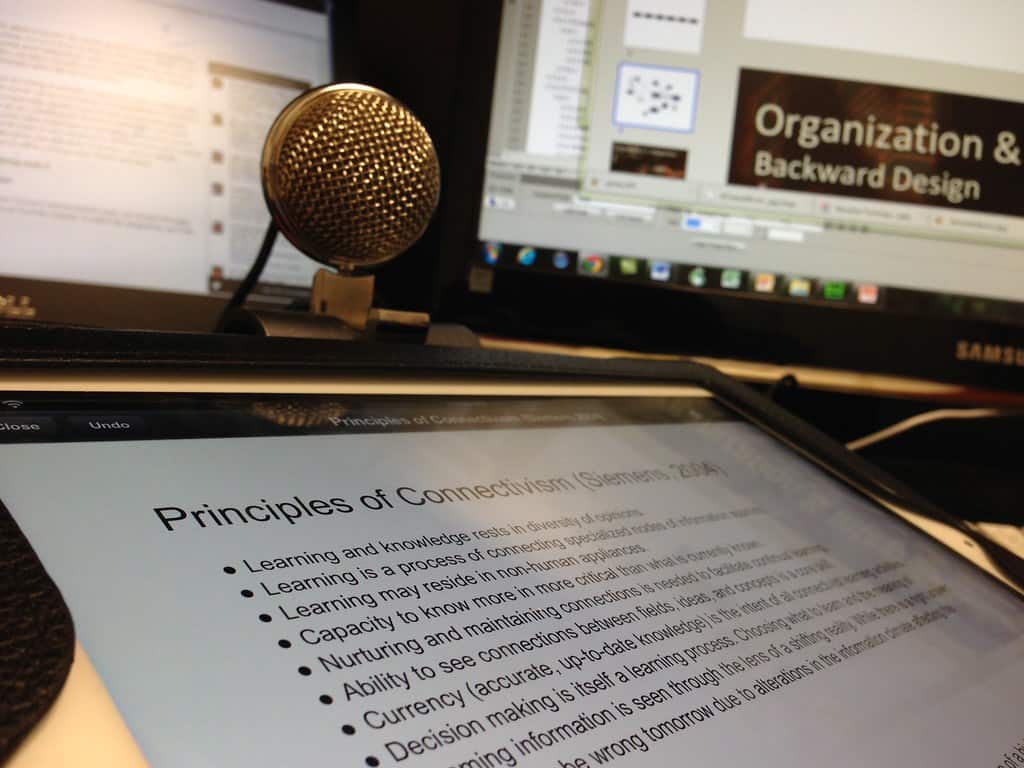As most other industries education has been upended by the recent pandemic. This has meant a scramble to adapt to the new environment and switch to online teaching. One particular aspect that is less discussed is how to adapt short courses to the online medium.
Short courses and summer schools are different. They are intense and brief events. Their traditional length (5-6 hours in a day) make them (in theory) much harder to adapt to online teaching.
In the last half a year I had to carry out this transition for courses run for a number of organizations such as the National Center for Research Methods (NCRM), Social Research Association and GESIS summer school. This work has built on my previous experience of teaching face to face as well as online courses (such as the ones I teach for the International Program in Survey Data Science – IPSDS). I thought it would be good to share some of the best practices I discovered on the way.
Do the prep work
When I started my first online short course for NCRM half of the class was “in darkness”. (By this I just mean that half of the students had their cameras off.) As I started the lecture darkness overcame the entire class room and I was left alone…talking to myself…(If you have experience recording lectures or talks you probably know the feeling you have when you start to think to yourself what the heck are you doing talking to your monitor.)
Seeing students in online courses is important for a number of reasons. First, seeing them makes it possible for the teacher to adapt the lecture. Secondly, it just helps the lecturer go through a full day of talking. Lastly, it creates a more engaging classroom experience .
My general advice is to communicate with students in advance, make expectations clear and move as much of the prep and admin before the class.
After experiencing “the darkness” of teaching online I decided to deal with it somehow. This is where preparation comes in place. One easy hack that I found was to just email students in advance and to tell them that they are expected to have their cameras on when we are in class, if possible. This simple message meant that 95% of people have their cameras on most of the time.
I came to realize that this preparation and the sharing of expectations before the class is crucial. As such, I have tried to move as many of the admin issues and initial bottlenecks in the emails sent before class.

Another example of this is statistical software. I normally teach stats using some kind of software. The advantage of using something like a computer lab is that you know how the machines should behave (in principle). While the use of open source software makes it possible to teach remotely, dealing with different computers is very problematic. As such, I ask students to install/update software/packages and download data in advance. Experience has also taught me that these instructions cannot be too detailed. For example, I was once stuck for half an hour trying to help a student unzip a file on an apple machine (IOS is a mystery to me). Now a detailed description on unzipping files goes in the email explaining how to prepare for class.
Adapt to the new environment
What is worse than “the darkness”? It’s “the silence”. You know that feeling when you ask a question and then there is a long awkward silence? If not, I truly envy you. Being able to deal with this silence is a important part of teaching but it becomes really problematic when you teach online. I think this is because “the cost” of saying something is much higher than in a face to face class. So how do you deal with that?
You can always use good old methods like naming people, although I do find they work less well in short courses than they do in term courses. My answer for this is to use the new tools at your disposal.

Most of the platforms used for teaching online have a few tools that can help “decrease the barrier of communication”. Two that I have used successfully are polls and break out rooms.
Polls are a nice way to get a feel for how the class is doing, see if there are problems with understanding certain concepts or just giving a break to the students and yourself. One way in which I use it is to help me guide the activity in the classroom. For example, I would ask students if they prefer some more lecturing on more advanced topics or to start the practical.
Group activities are also a great way to make a class more interactive. Using group activities in break out rooms is essential to engage the students and change the flow of the class.
Use polls and breakout rooms as often as you can to keep things interactive.
One time when break out rooms are surprisingly useful is during computer practicals. In principle students should be working on their own through a worksheet. Nevertheless, I found that replicating the feel of a “desk-mate” really helps with the experience. I do this by creating breakout rooms of two students.
This helps in a number of ways. First of all it’s an opportunity to interact with someone. Also, it makes it easier to ask questions and problem solve together. Finally, it actually makes it easier for the teacher to talk to course participants. I regularly jump from group to group either to answer questions or just check on how they are getting on. This is a great opportunity to actually get to know people and get questions. Larger groups tend to work less well so whenever possible I would recommend to stick with two per group as it encourages interaction.
Mix it up
The idea of a full day online course sounds pretty daunting. While it has the traditional advantages (short, intense, easier to schedule) from a pedagogical point of view it sounds pretty difficult to pull off. It is a far cry from the short 5-10 minute videos recommended for asynchronous teaching.
My experience so far is that it is possible to create a pleasant (or at least not torturous) full day online course. One thing that I think really makes it easier to endure is to mix up the types of activities done.
Mix different types of activities such as lecturing, practicals and group work to make the course more engaging.
When I teach statistics that includes practicals my day is divided in two (morning and afternoon) and within it I have the same structure (ignoring the admin and intros as the start of the day). I start with a lecture, this is followed by a practical and then going through the solution together. Repeat in the afternoon.
Out of all of these activities the longest is the practical, which is designed to apply the lessons to real world problems. This is also a period when I can actually get to know the students by jumping from group to group. (if you are wondering I give them the solutions in advance although I try to dissuade them from using them in class…should be a fall back if things just don’t work)
When I don’t have computer practicals I try to sprinkle group exercises in breakout rooms at regular times.
The future of short courses
I think one of the reasons we continue teaching short courses in the same format (synchronous 1 day for short courses or 5 days for summer schools) is because we hope to go back to the normality of teaching face to face soon. That being said, online teaching offers incredible flexibility and there might be avenues to reinvent the classical format.
The way I see it there is a continuum of ways of teaching (I imagine there are more scientific typologies in the education literature). At one extreme we have full day face to face teaching and at the other we have courses like those offered by IPSDS with short videos, practicals and meetings spread over a term. The possibilities between these two extremes are endless.
One avenue that I think would be interesting to peruse is somewhere in the middle. One such a model could be to record the lectures in advance, offer practicals and solutions and have a shorter online meeting. This could make short courses cheaper in the long run. An added advantage is that we could offer them to anyone in the world as time differences would be less problematic. This format would be different from MOOCS as it still involves some synchronous teaching and the ability to talk with an expert on your topic.
Hope this was helpful. If you have your own experience with teaching online that you want to share please comment bellow. If you want to learn a little more about my teaching check this page.





